#gamera 2015 short
Text
youtube
GAMERA (2015) Short Film
This Gamera's design became the basis for his look in GAMERA -Rebirth-.
#video#video post#youtube#youtube link#kaiju#gamera: guardian of the universe#gamera (2015)#gamera 2015 short#gamera#gyaos#Youtube
1 note
·
View note
Text
GAMERA (2015)
I was able to find the entire short on Youtube, so here you are:
youtube
12 notes
·
View notes
Text
Kaiju Week in Review (November 20-26, 2022)
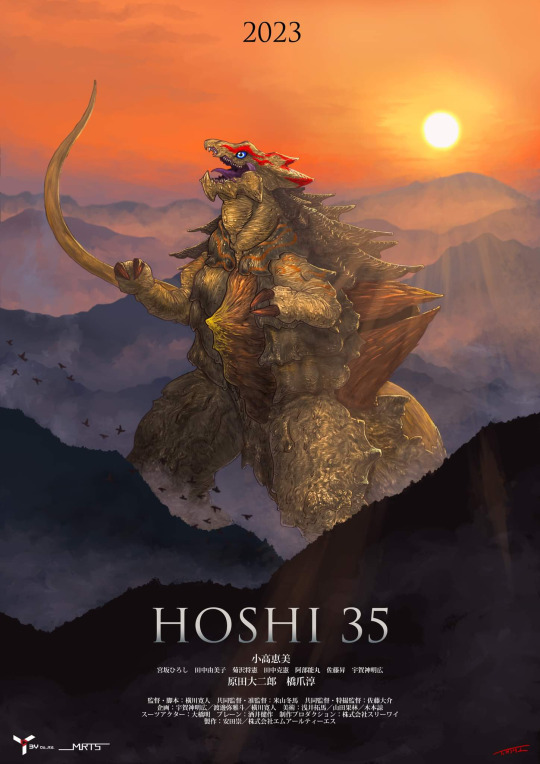
Megumi Odaka, best known as psychic Miki Saegusa from the Heisei Godzilla series, retired from acting in 2000 due to health issues and disappeared from the public eye for a decade. The narration she contributed to Godzilla vs. Gigan Rex was her first role since then, and she's finally ready to go back in front of the camera. 3Y Film (The Great Buddha Arrival, Nezura 1964) has a new kaiju movie in the works, Hoshi 35, which Odaka is set to star in. Since it's a 3Y joint, and part of a celebration of the 35 years since her acting debut, expect it to get meta. As usual, Hiroko Yokokawa is directing; another key player is Daisuke Sato (Howl from Beyond the Fog), who will serve as director of special effects, cinematographer, and suitmaker (with Tomoya Ayaki).
3Y productions are known for bringing back veteran kaiju actors, and Hoshi 35 has already cast several besides Odaka, this time focusing on the Heisei era instead of the Showa era. Jun Hashizume played MOGUERA pilot Koji Shindo in Godzilla vs. SpaceGodzilla and Kojiro Inaba in Ultraman Z, Daijiro Harada was Mechagodzilla captain Takuya Sasaki in Godzilla vs. Mechagodzilla II, and Akira Ohashi stepped inside Gamera in Gamera 2, Iris in Gamera 3, and King Ghidorah in GMK. He'll be playing another monster in this one, Hoshikuzu. Hiroshi Miyasaka and Yumiko Tanaka will appear as well.
No plot details are currently known. The film is aiming for a October 2023 release date.

Gridman Universe, the crossover film for SSSS.GRIDMAN and SSSS.DYANZENON, has a new pair of posters and a teaser trailer. It'll hit theaters in Japan on March 24 (and hopefully arrive in the West before the year is out). Excessive fanservice aside, I really enjoyed GRIDMAN, but haven't gotten around to DYNAZENON yet... it aired in Spring 2021, which was a pretty chaotic time to be a Wikizilla editor, and I think I was under the impression it was all mecha, no kaiju. Guess I have to now!

Veteran Ultra Series director Takeshi Yagi debuted a proof-of-concept short at Tokyo Comic Con called AKARI, which you can also watch online. The story is simple—a giant heroine (Akari) battles a rampaging cyborg kaiju (Pythagodon) in a futuristic, neon city—but Yagi and company have far greater ambitions for it. They created it as part of a course on tokusatsu techniques, and hope to turn it into a feature or series with the funds from that course, as well as other crowdfunding efforts. The story they've drawn up is pretty intriguing: a 2076 Japan where corporations run amok, the AI uprising is at hand, and an alien race who survived their own rogue AI empowers a woman to save the Earth.
Matt Frank designed Akari. Akihiko Iguchi (Mechagodzilla, King Caesar, Titanosaurus) came up with Pythagodon, and boy, you can tell. I hope we haven't seen the last of them.
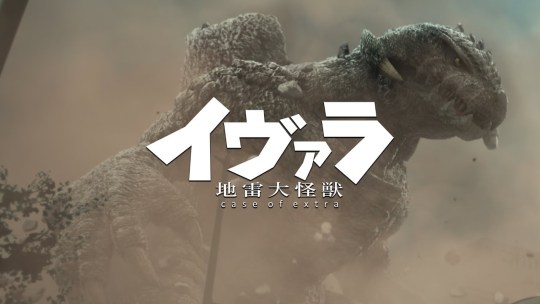
One more kaiju short for you to watch: Ivalla the Land Mine Monster: Case of Extra. This one is in more dire need of subtitles to get the full experience, but there's still a quality rampage to witness. From the other videos on the channel, Yuki Kurosu has been working on this for 8 years—props for persevering!
youtube
Godziban squeezed another episode out of Godzilla Festival 2022, this one focusing on the puppet displays and demonstrations at the event and the upcoming Blu-ray-only episodes which will see Bagan make his debut and many others battling it out.
youtube
Kadokawa released a fine video tribute to Gamera for his 57th birthday, which naturally ends by teasing the Netflix project. Interesting that they skipped over the 2015 short though.

Your reading assignment for the week is Patrick Galvan's excellent tribute to Kazuki Omori for Toho Kingdom, a well-researched overview of his career and analysis of the two Godzilla films he directed.
#hoshi 35#megumi odaka#gridman universe#akari#ivalla the land mind monster case of extra#gamera#kazuki omori#godzilla#kaiju#tokusatsu#vfx#godziban#bagan
114 notes
·
View notes
Text
My favourite kaiju designs:
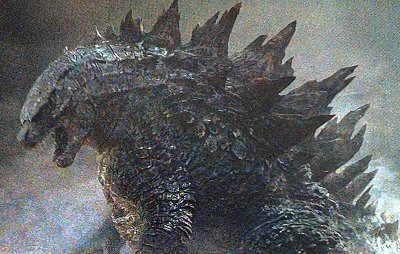
Garegoji (Godzilla 2014)

The Crackler (Godzilla: The Series)
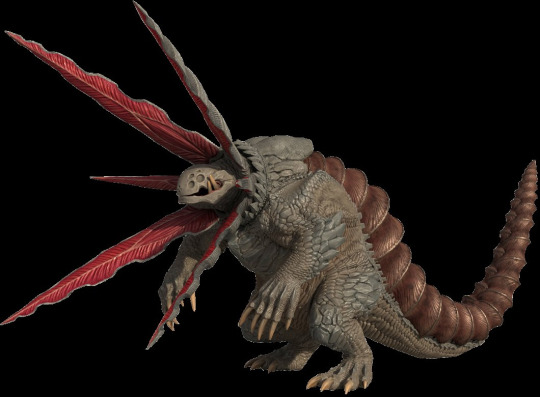
Gabora (Shin Ultraman, 2022)

Zeruel (NGE)
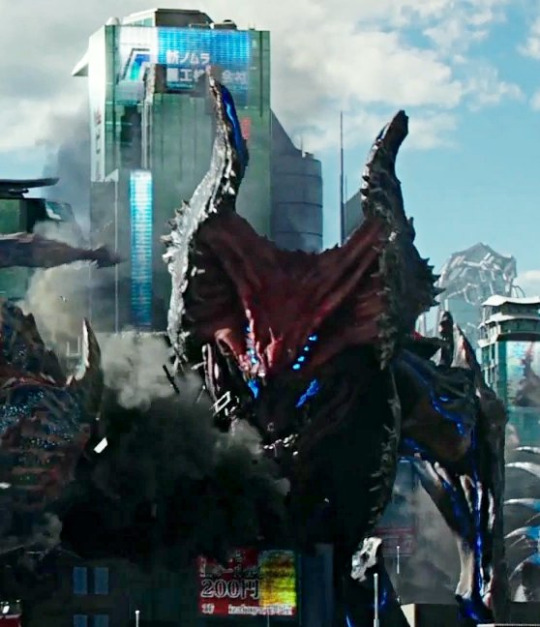
Raijin (Pacific Rim: Uprising)

Zegga (SSSS.GRIDMAN)
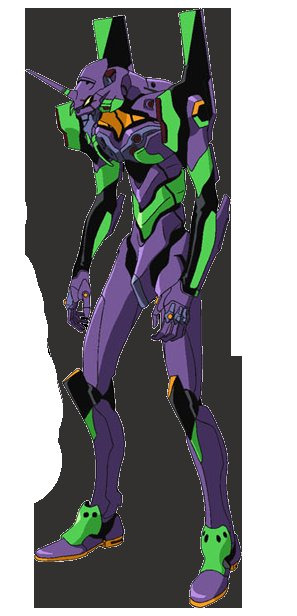
Evangelion Unit 01 (Evangelion series)

'Unnamed tentacle monster' (Gamera 2015 short film)
#Kaiju#monstermarch#kaijune#titanotober#daikaiju#Godzilla#monsterverse#pacific rim#gamera#evangelion#rebuild of evangelion#nge#ultraman#shin ultraman
30 notes
·
View notes
Text
Continuing on the Gamera talk. Like... why haven't we gotten a new movie. Godzilla has been getting some for the past few years. Meanwhile you wanna know what Gamera got? A 5 minute "short film" for his 50th anniversary back in 2015 and nothing else. That could've been a whole new movie but nope. My only hope at this point is if Toho or Legendary Pictures get in contact with the current owners of Gamera and ask if he can appear. I swear it's as if there is no love for our friend of the children turtle friend.

11 notes
·
View notes
Photo

Now with a graphic that hopefully illustrates that the title is clever, and not, in fact, the least creative thing I could’ve called it.
...for the people who’ve even seen the movie it’s referencing.
...and liked it enough to not immediately purge it from their memories.
...
Anyways, the subject of today’s inaugural GAMERA MARCH post is...
Why?
...
...okay, valid.
I guess I bring up Gamera primarily because fandom-wise, I tend to be drawn to sci-fi/urban fantasy stories with interesting (and preferably wlw shippable) female characters, and the Gamera franchise is one that fills that particular niche. Out of a total of twelve, the five most recent Gamera films (released 1980-2006), all have women as either primary or secondary protagonists, sometimes with multiple plot-important characters in the cast and with two films giving female cast members top billing. Add to that, three and sometimes four of those particular five movies are regarded as some of the best in the Kaiju genre, outclassing some far bigger-name monsters you’re probably familiar with.
As a franchise, Gamera occupies a strange place in the popular consciousness. While running concurrently with the other heavy-hitters in the genre during the peak of classic Kaiju cinema, the big turtle has been largely left out of a recent phenomenon called the Kaiju Renaissance, a resurgence in the popularity of giant monsters that’s been taking place throughout the last decade (after a drought of content in the late 2000s and early 2010s). The most attention Gamera has recieved since the last film Gamera the Brave in 2006 was a short proof-of-concept teaser in 2015 and the upcoming Gamera: Rebirth mini-series on Netflix. It’s entirely possible the latter project may renew some fandom interest, and if that is in fact the case, allow me take a month-long break from being a Battra apologist and toss my two cents in the pile of why the Gamera films are, in fact, worth revisiting.
Upcoming this month:
A personal writing goal of at least one Gamera-related fic chapter or one-shot per week, including the final chapters and epilogue of my Gamera/TMNT crossover
Discussion/review of the seven Gamera films released in March, on their release dates - starting March 6th with Gamera 3: Revenge of Iris (1999)
Discussion/review of the five Gamera films not released in March, dates TBA and likely following the the last of March ones
...whatever else I have time for, as the writing and chapter artwork is going to take up the bulk of the time I have to spend on this
1 note
·
View note
Note
I had an idea what you can base your grownup Toto on.....
The Gamera from that short film in 2015!!!!!!


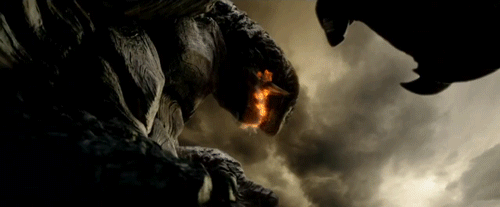

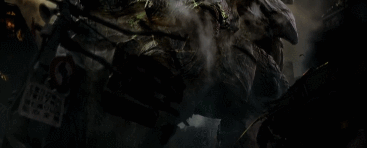


YES
7 notes
·
View notes
Text
So in light of how my pinned post is nearing a year in age, I will be delaying everything else on my watch/reading list to make my way back through the Gamera series to finally get this post made in light of the number of people expressing genuine interest in it. Each film will be accompanied with the original Japanese theatrical poster and the one commissioned by Arrow Video, along with up to eight screenshots as I see fit. This is on top of no less than five minutes IRL reading's time worth of text. I will not be covering the 2015 short, and I will be classifying Gamera the Brave (2006) as part of the Heisei era. Initial post on Gamera: The Giant Monster (1965) will come promptly by August 1st and hopefully I can get through one entry a day at the minimum following that, all handled through reblogs on a single post.
5 notes
·
View notes
Text
Tumblr Nuked Our Inbox
Hey, everyone. It’s been a hell of a day. Our inbox has been... Thoroughly Tumblred, and we’re missing some requests that are on the document.
Cake Batch:
Goth Volkner and Scene Kid Flint
----
Harvest Batch:
Decima's Short Haired Serena in default clothes
Britannic and Titanic Empoleons
2D Bubbles Litten
Bobbed Rosa
Hilda with a crewcut, both shorts and pants
Hilda with Scarlett Johansson’s 2015 Oscars haircut, wearing both shorts and pants
Ponytail Lillie with evened out sidebangs and a 360° undercut
Unova Clothes Pixie Cut Cynthia
----
Trim Batch:
Aro and Bi Aron Line
Delta Solosis
Gamera Bergamer
Age of Ultron Avengers
Ganondorf Emboar
Delta Squirtle
Skittles Diglett
Bowser and Dry Bowser Blastoise
Toucan Sam Toucannon
Lesbian Phantump
Komodo Dragon Sceptile
Delta Kabuto
Delta Mudkip
----
Shay Edits:
Rainbow Pastel Golurk
Black Lab Lillipup
Ingo/Emmet/Clay Fire-types
Lucas/Giratina swap
Enby Houndoom line
Half Life Dewott
Beauty as Barbie
7 notes
·
View notes
Video
OTD in Otakusatsu fandoms: "Gamera vs. Gyaos" is released in Japanese theaters. Sometimes spelled "Gaos", the movie has also been titled "Return of the Giant Monsters". Gyaos would become a reoccurring kaiju in the Showa era, and make a return in the Heisei era Gamera movie trilogy. As well as be featured in the 2015 short. Considered to be one of the 'better' Showa era Gamera films. #gamera #gameravsgaos #gameravsgyaos #kaiju #daikaiju #tokusatsu #otakusatsu #fandom #onthisday #onthisdate #showaera #scifi #sciencefiction #bats #bat #giantturtle #🐢
#otakusatsu#kaiju#gamera#fandom#bat#giantturtle#scifi#sciencefiction#onthisday#bats#🐢#gameravsgyaos#showaera#daikaiju#tokusatsu#onthisdate#gameravsgaos
5 notes
·
View notes
Photo

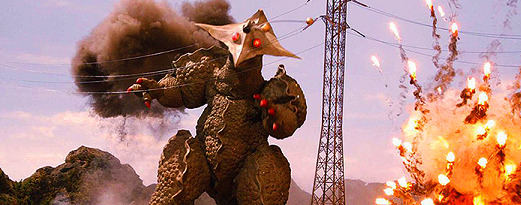
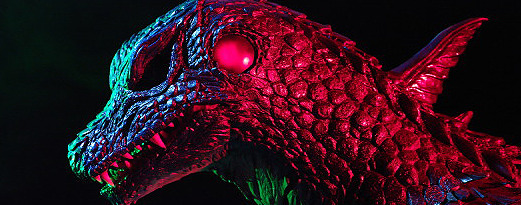


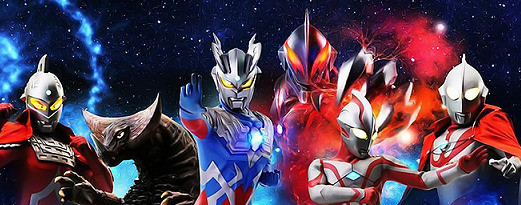
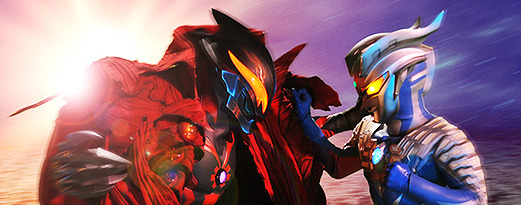
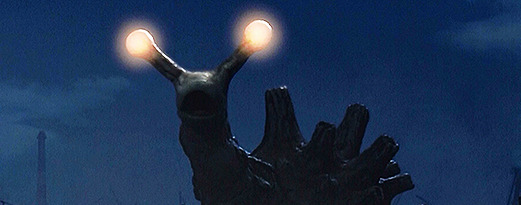
In the kaiju circles I usually run in, we tend to refer to the period between (and including) 2007 and 2012 as the “wilderness years”, i.e., a time when the output of new, original kaiju media reached a significant low. That’s not to say there wasn’t anything new – independent films like Deep Sea Monster Raiga and Geharha, the Dark and Long-Haired Monster gained attention in 2009, while the omnipresent Ultraman franchise quietly but steadily beat on against the popular current. Perhaps the perceived lack of output is not the reason we refer to these years the “wilderness” – there was almost at least one new production for each of the aforementioned years. Rather, the wildly varying quality of this period’s output is a more likely explanation. An even bigger contributing factor may be the lack of a big name franchise to anchor this period, with Godzilla having gone on self-imposed retirement in 2004, and a new Gamera franchise failing to take off after 2006’s Gamera the Brave.
In the 1960s, the presence of Toho and Daiei’s mega-franchises allowed competing studios to throw their hats into the kaiju ring – Nikkatsu offered up Gappa, the Triphibian Monster (1967), Toei introduced us to The Magic Serpent (1966), and crashing down to Earth came The X From Outer Space (1967), from Shochiku. With Godzilla and Gamera raking in mega-bucks at the box office, these alternative offerings were able to bask in reflected glory. However, between 2007 and 2012 no such big franchises existed, and while Ultraman persisted, his popularity and box office draw was the lowest it had been since the franchise was resurrected with Ultraman Tiga (1996). During Godzilla’s Millennium series (1999 to 2004), Japanese filmgoers became fatigued with the varying quality of each successive production, and eventually grew tired of giant monster action on the big screen. Gamera’s attempted resurrection in 2006 never stood a chance – the climate simply rendered it moot.
The “wilderness years” nonetheless represent something relatively unique in the history of the kaiju genre: a surprisingly high number of kaiju comedies were produced in this time. Much like the spaghetti-western in the ‘70s, perhaps kaiju filmmakers sought to keep the genre alive by introducing over-the-top comedic elements to the traditional genre structures in the search for something fresh and new. The first of the big kaiju comedies was Hitoshi Matsumoto’s Big Man Japan, released in 2007. Something of an absurdist deconstruction of the “giant hero” genre, the film features Matsumoto himself as a deadbeat loser with no friends, strained relationships with his few family members, and a lifestyle just above the poverty line – and who can transform into a giant to combat kaiju attacks. In a highly surrealistic ending – even by this film’s standards – Big Man Japan even manages to make a statement about Japan’s uneasy relationship with its superpowered ally, the United States. Acting as something not unlike a kaiju play on This is Spinal Tap!, Big Man Japan is perhaps not the most accessible kaiju comedy for Western viewers, but is certainly at least something entirely new for the genre during a time when it desperately needed exactly that. However, for every This is Spinal Tap!, there’s sure to be a Superhero Movie, or Epic Movie, or…
Minoru Kawasaki’s Monster X Strikes Back! Attack the G-8 Summit – a satirically flaccid attempt to parody the leaders of the free world – could not have come at a worse time. Resurrecting the monster Guilala from The X From Outer Space after an absence of 41 years on the screen, the film makes two tardy fundamental errors: coming along after Godzilla and Gamera were both discharged from active duty, and reviving a one-shot monster that hadn’t been seen on the big screen (in any non-stock footage cameo capacity) for four decades – even then, that was during what was practically the complete opposite of the wilderness years: the “Kaiju Boom” of the 1960s. 2008 also saw the release of Great Decisive Battle! Superior Ultraman 8 Brothers, the 20th theatrically released Ultraman movie. Featuring return appearances from characters that spanned 40 years of the franchise, the film is a very fine one, but ultimately falls into the pitfall that so many Ultraman features do: overdependence on the audience’s familiarity with the franchise’s rich history. This problem is especially highlighted by the fact that the film largely takes place in an alternate universe with equally alternate versions of otherwise familiar characters.
2009 was somewhat kinder to the kaiju genre, with a generally more favourable slew of features seeing release. Shinpei Hayashiya, responsible for the legendary fan-film Gamera 4: Truth (2003), released the second film in his Reigo/Raiga series, Deep Sea Monster Raiga. A sequel to 2005’s Reigo: The Deep Sea Monster vs. the Battleship Yamato, the film – to put it lightly – is an uneven one, and suffers from a wildly irregular tone and some flat attempts at humour. Nonetheless, Hayashiya’s adoration of the genre shines through enough to make the film at least an enjoyable one. An even more affectionate tribute to the genre shines through in the 20-minute short Geharha: The Dark and Long-Haired Monster. Featuring direct homages to the likes of Invasion of Astro-Monster (1965) and The Mysterians (1957), Geharha benefits from a brisk running time and breakneck humour, all the while being careful not to mock the genre itself, but just affectionately have fun with it. Director Kiyotaka Taguchi would – very deservedly - go on to anchor the Ultra series’ return to glory, working on the television productions Ultraman Ginga (2013), Ultraman X (2015), Ultraman Orb (2016), and their movie counterparts.
The same cannot be said for Tomoo Haraguchi’s Death Kappa (2010). Produced with noble intentions – to film a new, original kaiju film created entirely through the use of traditional tokusatsu effects techniques – Death Kappa is nothing short of a trainwreck of a movie. Much of the humour is detrimentally absurd, and some jokes commit the cardinal sin of actually making fun of the genre and techniques it claims to be paying homage to. Haraguchi’s intentions were certainly commendable, but the finished product ranks among the very worst of the kaiju genre and – somewhat dishearteningly – is a film that betrays its own modus operandi. Haraguchi’s efforts (or lack thereof) are doubly disappointing considering he previously worked on the outstanding special effects of Gamera: Guardian of the Universe (1995), and Gamera 2: Advent of Legion (1996). Aside from cameos from future Shin Godzilla directors Hideaki Anno and Shinji Higuchi, Death Kappa is ultimately a film best left forgotten about, and most likely will be.
The “wilderness years” saw the release of two further Ultraman films: 2009’s Mega Monster Battle: Ultra Galaxy Legends! The Movie, and its direct sequel Ultraman Zero: The Revenge of Belial in 2010. Both films are among the very best of the theatrical Ultra series, and thrust the franchise’s visuals lightyears forward by heavily combining traditional tokusatsu effects with substantial helpings of green-screen and CGI. While gratuitous green-screen photography can look ugly when used in excess, the vast space opera-esque lsndscapes richly brought to life in these two Ultra-films are a testament to Tsuburaya Productions’ willingness to try new things to ensure their most iconic franchise remains relevant, fresh, and most importantly, fun, without ever betraying or abandoning the core dynamics and conceits of the franchise.
Among these uneven times, however, emerges a diamond in the rough: 2009’s Demeking, the Sea Monster, a theatrical adaptation of a popular 1991 manga by Takashi Imashiro. Despite what could be argued a misleading title, Kotaro Terauchi’s film is a quietly beautiful meditation on the importance and inevitability of accepting the responsibilities that come with growing up. The sea (in actuality, space) monster of the title only appears in a magnificently shot dream sequence – something the film has received frustratingly undeserved scorn for from the wider Western kaiju community – and this is absolutely to the film’s benefit. Demeking becomes a coming-of-age subversion of the genre itself: a kaiju movie without a kaiju, or at least the literal physical appearance of one within the film’s internal world. While certainly not for the average viewer who is simply looking to enjoy a traditional kaiju romp, Demeking is a woefully underrepresented movie that stands out as the crowning jewel of a difficult period in the genre’s history.
It’s worth mentioning that these “wilderness years” also saw Heisei Godzilla special effects director Koichi Kawakita release his short film The God of Clay, while in 2009 the independent feature Daikaiju Eiga “G” saw release. All was not quiet on the Western front with the highly-secretive release of Cloverfield, while on Japanese television, Tsuburaya Productions released Ultraseven X, two seasons of Ultra Galaxy: Mega Monster Battle, and the compilation clip-show Ultraman Retsuden. 2010’s Daimajin Kanon reintroduced Daiei’s stone idol in a serialised television format, with mixed degrees of success.
The wilderness ended in 2013, which saw the seeds of the current kaiju renaissance being planted. Guillermo Del Toro’s mechs-against-monsters epic Pacific Rim paved the way for Legendary’s MonsterVerse, the Ultra franchise returned to television and begun its current successful streak with Ultraman Ginga and Neo Ultra Q, with each subsequent series proving more successful than the last. Minoru Kawasaki also released his second kaiju feature, Earth Defence Widow – but the least said about that, the better. As previously posited, these “wilderness years” can be defined not by their lack of kaiju productions, but perhaps instead by the absence of a steady ongoing franchise to anchor the period, and the inconsistent quality of the content these years did produce. However, regardless of the value of the period as a whole, the ragtag group of productions that formed the “wilderness years” kept the flame of the kaiju genre burning long enough for it to be rekindled with the widespread genre resurgence enjoyed today.
#essay#writing#kaiju#kaiju wilderness years#godzilla#ultraman#monsterverse#toku#tokusatsu#daikaiju#kaiju eiga#blog post#blog#text#guilala#demeking#big man japan#monster x strikes back#death kappa
331 notes
·
View notes
Photo
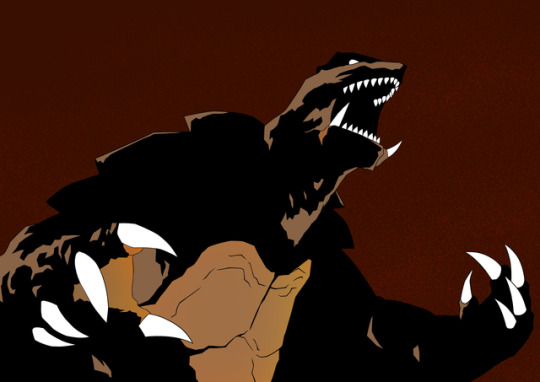
Gamera (2015 Concept Trailer)
Sure the film never came but I essentially treat it as a short film at this point and as a cool design, and my first exposure to the Gamera series, I wanted to include it as the concluding piece of my art set.
74 notes
·
View notes
Text
Mom wrote an essay about Godzilla and Japan a few years ago in which the late Akira Takarada featured prominently. She’s not on social media, so I asked if I could share it here.
Enlightened by a Japanese Monster
By Barbara Murphy
Akira Takarada entered the ballroom at the 19th annual Godzilla Festival in Chicago in 2010. Here was the Japanese actor whose character Ogata helped to save humanity in the original 1954 Godzilla movie. Erect and fit in his seventies, he wore a tailored, striped summer suit, a contrast to his ardent American fans, wildly clapping in their wrinkled cargo shorts and “Got Zilla?” t-shirts.
What in the world was I doing here? Growing up in the 1950s and 1960s, I hated monster movies. Too much fighting. Not enough dialogue.
But then I became a mother in 1993 to a son who by age four had checked out every dinosaur book in our county library system. His fascination with prehistoric creatures led to a passion for fictional monsters, mostly Japanese—colorful Pokemon and no-nonsense kaiju. Library visits now included a full sweep of videos with titles like Godzilla’s Revenge; Ghidorah, the Three-Headed Monster; and Gamera vs. Zigra.
I found Ghidorah creepy with all those swinging heads, and Gamera, the flying turtle, almost comical. But I was taken by the rainbow-colored Mothra and her twin fairies in Mothra vs. Godzilla, another kaiju movie in which Takarada had a role. In the fairies’ song, they call Mothra a guardian angel who will come whenever the people need kindness and protection. Who doesn’t want someone like that in their lives?
No slouch when it comes to fighting, Mothra’s devotion to her people and her strength and beauty encouraged me to discover more about Godzilla’s world. By the time my son was 10, there we were, my husband, son, and I, driving 800 miles to an event that still turns human heads when we say it: The Godzilla Festival, or G-Fest. We have attended every year since, even in 2018 when my husband and I returned from an overseas trip at 10 PM the evening before we needed to depart.
While participating in the Godzilla Festival and learning about kaiju, I have seen my son grow from a shy youngster to a leader there of panel discussions in 2018 and 2019 (the most recent to have been held thanks to COVID-19), surrounded by “Big G” friends who live in Scotland, Kentucky, and California.
Beyond that, my knowledge and love of Japanese culture and its people have deepened, making the past two years of increased hate crimes and prejudice in our country against Asians even more troubling.
A soft spot for Japan was already alive in my heart when I was young, in spite of my being born 11 years after the bombing of Pearl Harbor. It’s hard to recall what I learned where, in school or the culture, but I do recall some paradoxical sentiments.
I was taught that the Japanese were evil. Their aggressiveness in WWII was proof, and kamikaze pilots in movies underlined the point. I also ascertained that a lot of their post-war products, including toys, were an attempt to conquer the world in a new way, manufacturing and exporting the cheapest products they could. Everything was suddenly “Made in Japan” and, similar to some of today’s Chinese goods, everybody complained but bought them anyway. The Japanese continued to be our enemy.
Here came the tough part. I loved the cute toys.
I still have some of them: a glass tea cup decorated with pink flowers; a seven-inch stuffed mouse wearing a pinafore and striped beret.
That talent for creating cuteness became more visible when regular attendance at the Godzilla Festival led our family to a tour of Japan with other Godzilla fans in 2015, where we saw parking space cones decorated with smiling faces and cream-filled biscuits stamped with pandas. We also witnessed firsthand the generosity and star power of Mr. Takarada as he arranged for us a private tour of Toho Studios and signed autographs for waiting fans after dining with us on a boat on Tokyo Bay.
Preparing for that once in a lifetime journey also increased my awareness of the Japanese language. I had heard its rhythms often enough in those early videos and more recently during my favorite G-Fest tradition, interview sessions with a translator and Japanese guests such as Mr. Takarada. However, when one is trying to learn to speak a few phrases like “Thank you” and “Can you help me find my hotel?”, one’s appreciation grows.
As Takarada that day in 2010 said hello in English, we smiled, appreciating the gesture, but as everyone sat, and he spoke into the microphone in Japanese, we began to get what we had come for: the native language of our hero who never talked. Godzilla did not have to speak, his rage-filled roar plenty, fueled from being created out of American-made nuclear debris.
In that first black and white film, Mr. Takarada plays a sailor who accompanies Dr. Serizawa, a scientist with a conscience, into the depths of Tokyo Bay after Godzilla has nearly destroyed Tokyo. Both safely secured to a boat, it is Dr. Serizawa who carries his creation, the Oxygen Destroyer, a narrow tank that literally holds a solution. Once released, that chemical will deplete all living things nearby of oxygen. Knowing the enormous power of his invention beyond the current crisis, as Takarada’s Ogata rises to the surface and safety, Dr. Serizawa remains underwater, severing his own tie to the boat.
The first time I saw this sacrifice for the common good, I was in the darkened TV room of my son’s Japanese teacher. I did not know it then, but she was born in Hiroshima. When our tour group visited the Hiroshima Museum, it felt odd but affirming to stand next to Japanese museumgoers. My son and I got so caught up in the relics that the tour guide had to come find us to get us back on the bus.
Once I’d climbed one stage of Mount Fuji, tried to keep up with Kyoto morning commuters, and seen the decorated boats and shrine of Itsukushima, any remnants of my childhood stereotypes of the Japanese had dissolved.
During Mr. Takarada’s next visit to G-Fest in 2012, he sat in the front row of the annual costume parade. The ballroom was packed as adults and children stomped and swayed up the aisle to the table of judges across from Mr. Takarada. A wide variety of characters drew praise, among them a gray and silver fabric Anguirus, a long necked Rokurokubi who frightened onlookers like a good yokai should, and a crawling Mothra larva with eyes that lit up red and blue.
And then a young man dressed in a yellow costume, a replica of the diving suit and helmet Mr. Takarada himself had worn in Godzilla, carrying an Oxygen Destroyer, approached Mr. Takarada amidst camera flashes and cheers. Overcome with emotion, the young man removed his helmet and bowed to Mr. Takarada. As they hugged, I felt lucky to be present as a Japanese actor and an American viewer met in real time and to witness the convergence of history and art where one act inspires another. And the next day, at the closing luncheon, I was the beneficiary of Mr. Takarada’s attention.
Mr. Takarada, wearing the traditional yukata, entered the room from the back where we sat. The whole room stood up and applauded; he bowed and began to walk toward the front where a place had been reserved for him. As he moved forward, I too bowed, my hands together in a prayer-like position in front of my heart. Then, as I separated my hands to begin clapping again, he gently took my right hand and kissed it. No swagger. Just pure star decorum.
It’s impossible to predict what motherhood and monsters can bring.
112 notes
·
View notes
Text
The Almost-Full Monty (Montefalco Sagrantino Anteprima 2014)
Another day at the “office”
Back in February, I spent a handful of days in the charmingly-imposing Italian town of Montefalco, as the U.S. media guest attending the anteprima showing of Sagrantino’s somewhat-troubled 2014 vintage.
Generally, the way that these things work is that we press-types get to sit around in beautiful locales tasting (and pontificating upon) the latest – and usually not-so-latest – vintages of a region, when we’re not attending dinners or visiting nearby producers, I mean. Just another day at the office…
After highlighting a handful of producers from that visit, I thought that I would wrap up the Sagrantino-related coverage here by sharing some of what I found to be among the more interesting wines that I encountered on that anteprima trip. Some of these wines will, in true 1WD form, be nigh-impossible to find, though most won’t; but think of this less as the brain-dump of tasting notes that it is, and more of an enthusiastic recommendation of some of Montefalco’s best producers.
Now that we’ve gotten that out of the way, I have what feels like ten billion wines to tell you about; and so, let’s get it started in here while the base keep runnin’ runnin’, and runnin’ runnin’…
2015 Tenuta Alzatura Rosso di Montefalco (Umbria, $NA)
We can’t – well, we can, but we shouldn’t – forget one of Montefalco Sagrantino’s little vinous brothers, Rosso di Montefalco, which in Cecchi Alzatura’s case hails from three different vineyards supplying the Sangiovese, Merlot, and Sagrantino making up the blend; a key advantage since, as Agronomo Alessandro Mariani told me, “In Montefalco, everything is in small pieces.” This offering is textbook for the region: chewy, sexy, plummy, and spicy.
2007 Tenuta Alzatura “Uno di Dieci” Sagrantino di Montefalco (Umbria, $31)
When it comes to the burly Sagrantino grape, having perspective in essential, so it helps to taste something from an older, excellent vintage to get said perspective, as I was fortunate enough to do with Alzatura’s `07 incarnation of their “Uno di…” series. This is still young, but has kept its round, ripe, and generous fleshiness. Earthy, dark, leathery, juicy, and fruity, this one has character, power, and poise.
Scacciadiavoli’s imposing cellar
2015 Arnaldo-Caprai Montefalco Rosso Riserva (Umbria, $46)
So… yeah, you’ve heard of these guys, who famously threw out their first vintage back in the 1970s, and now at 136 hectares of vines and 800,000+ bottles of wine a year are among the larger producers in the region. They’re fans of extended oak aging which, seemingly paradoxically, smooth out the rougher and ample Sagrantino tannins by adding more tannin (and thus elongating the tannin molecule chains and makes for a potentially silkier mouthfeel overall. This Rosso Riserva sees twenty months in oak, and it’s hot, burly, and big, while also being spicy, supple, and plummy. Get a good steak, because you’ll need it with this.
2014 Arnaldo-Caprai “25 Anniversario” Sagrantino di Montefalco Riserva (Umbria, $75)
This Sagrantino is the result of vineyard and barrel selections, resulting in a concentrated, meaty, and excellent red that’s crazy spicy, crazy powerful, and crazy smooth. The tannins might be supple, but they are also significant and abundant; the wine will definitely age, and it definitely requires it.
NV Scacciadiavoli Rosé Vino Spumante Brut Metodo Classico (Umbria, $NA)
And now for something completely different… here’s a side of Sagrantino that one rarely sees: namely, a “feminine” take. In this case, the burly grape is picked on the early side and given the Champagne treatment, including sur lie aging. The result is a combination of ripe red apple, brioche, and citrus tones, and is eminently gulpable.
2014 Di Filippo ‘Etnico’, Montefalco Sagrantino (Umbria, $NA)
This is a minor triumph of the challenging `14 vintage; laden with tobacco spice, ripe and tart plum fruit, and serious structure/grip, this is about as elegant as a young Sagrantino can get.
2014 Di Filippo Montefalco Sagrantino (Umbria, $50)
Tighter than a tourniquet, which has the advantage of temporarily showcasing freshness and minerality along with the more common Sagrantino elements of sipcy tobacco. This might not be ready for drinking until Elon Musk’s Roadster collides back into Earth…
Scacciadiavoli’s other imposing cellar
2014 Moretti Omero Sagrantino di Montefalco (Umbria, $36)
This gets very dark, very quickly, and moves from silky to mineral and gritty almost as quickly. Layers of herbal spiciness and dark fruits hint at something special ahead (if you can wait for it).
2014 Rocca di Fabbri Sagrantino di Montefalco (Umbria, $30)
Ohhhhhh! This one is getting very, very fresh with us! While it’s not the most complex Sagrantino you will encounter, the core structural elements and typicity are ridiculously strong with this excellent Sagrantino example. Taken with the acidic lift, it’s a winning combo.
2014 Fattoria Colleallodole Milziade Antano Sagrantino di Montefalco “Colleallodole” (Umbria, $45)
There’s so much going on here, it’s almost a little overwhelming at first blush; tobacco, herbs, flowers, mint, leather, plums… and lest you think that all of that reveal this early on might hint at a shorter aging curve, there are a shit-ton of tannins included for good measure to prove you wrong.
2014 Lungarotti Sagrantino di Montefalco (Umbria, $45)
Graphite, spices, and lots (and lots) of dark-fruited generousity, especially considering the vintage. It’s also powerful (and even a tad hot), but will make the steakhouse crowd very, very happy.
2014 Cantina Fratelli Pardi “Sacrantino” Montefalco Sagrantino (Umbria, $NA)
This single vineyard Sagrantino bears a name that hearkens back to the wine’s past, but is quite modern in presentation. Minty, brambly, and showing off black cherry, plum, and sweet tobacco action, this starts smooth, gets a nice lift in the middle, and ends powerfully and long. And I mean powerfully – at over 16% abv, this one will could get you onto your knees in pseudo-religious-prayer formation, and in short order.
2014 Valdanguis “Fortunato” Sagrantino di Montefalco (Umbria, $NA)
Fortune favors the bold, and in this case, also the grippy, leathery, and spicy. Tobacco, dark cherry, game meat, and even a hint of salinity make this one one of the more compelling Sagrantino releases of the vintage, in my not-so-humble opinion.
Tenuta Bellafonte
2014 Tenuta Castelbuono “Carapace” Sagrantino di Montefalco (Umbria, $38)
Part of the Lunelli group of brands, this wien is named after their famous tortuga shell-shaped edifice, which I can tell you from firsthand experience is a sort of odd wonder of design and construction. While the building might seem a bit on the whimsical side (and look like the giant Gamera decided to retire and become a winery), this Sagrantino isn’t fooling around at all. Elegant cigar spices, dried herbs, black and red cherry fruit, mineral, and even hints of roses are all packed into a fascinating aromatic profile.
2014 Cantine Adanti Arquata Sagrantino di Montefalco (Umbria, $45)
Tied up tight with sprigs of mint and other dried herbs, this red reveals little on the nose but starts to hint at great chewy fruitiness on the palate. That is, before said palate also tightens up into serious grip.
2014 Tenuta Bellafonte “Collenottolo” Montefalco Sagrantino (Umbria, $50)
You gotta admire the tenacity of this producer, who make 30,000 bottles a year from only estate fruit, and with only two wines in the portfolio. Going back in time with their vintages of Collenotolo was a treat, and it showcased how much their investment has paid off over the years (when asked how much that investment amounted to, owner Peter Heilbron replied “Too much! But pleasure has no price!”). The `14 Collenotolo is floral, herbal, earthy, minty, and full of cherries and spices on the palate. Sweet plums eventually take over, and the whole experience of drinking it is so nice that one feels compelled to keep going…
2013 Cantina Bartoloni “Essentia” Bianco Umbria Passito (Umbria, $NA)
It seems fitting to wrap all of this Montefalco-ing up with something uniquely Montefalco. While there’s plenty of dessert-style passito made from Sagrantino to be found in the area, the “Essentia” showcases Trebbiano instead, with no oak treatment. Apricot, sultana, and floral perfume on the enticing nose move to a soft palate entry, then to a sense of freshness, finishing with citrus peel and honey. All of which you’d need, too, if you had to wash down all of those burly, young Sagrantino reds…
Cheers!
Grab The 1WineDude.com Tasting Guide and start getting more out of every glass of wine today!
Shop Wine Products at Amazon.com
Copyright © 2016. Originally at The Almost-Full Monty (Montefalco Sagrantino Anteprima 2014) from 1WineDude.com
– for personal, non-commercial use only. Cheers!
Source: http://www.1winedude.com/the-almost-full-monty-montefalco-sagrantino-anteprima-2014/
source https://meself84.wordpress.com/2018/05/09/the-almost-full-monty-montefalco-sagrantino-anteprima-2014/
from Sommelier Courses https://sommeliercourses.blogspot.com/2018/05/the-almost-full-monty-montefalco.html
0 notes
Text
The Almost-Full Monty (Montefalco Sagrantino Anteprima 2014)
Another day at the “office”
Back in February, I spent a handful of days in the charmingly-imposing Italian town of Montefalco, as the U.S. media guest attending the anteprima showing of Sagrantino’s somewhat-troubled 2014 vintage.
Generally, the way that these things work is that we press-types get to sit around in beautiful locales tasting (and pontificating upon) the latest – and usually not-so-latest – vintages of a region, when we’re not attending dinners or visiting nearby producers, I mean. Just another day at the office…
After highlighting a handful of producers from that visit, I thought that I would wrap up the Sagrantino-related coverage here by sharing some of what I found to be among the more interesting wines that I encountered on that anteprima trip. Some of these wines will, in true 1WD form, be nigh-impossible to find, though most won’t; but think of this less as the brain-dump of tasting notes that it is, and more of an enthusiastic recommendation of some of Montefalco’s best producers.
Now that we’ve gotten that out of the way, I have what feels like ten billion wines to tell you about; and so, let’s get it started in here while the base keep runnin’ runnin’, and runnin’ runnin’…
2015 Tenuta Alzatura Rosso di Montefalco (Umbria, $NA)
We can’t – well, we can, but we shouldn’t – forget one of Montefalco Sagrantino’s little vinous brothers, Rosso di Montefalco, which in Cecchi Alzatura’s case hails from three different vineyards supplying the Sangiovese, Merlot, and Sagrantino making up the blend; a key advantage since, as Agronomo Alessandro Mariani told me, “In Montefalco, everything is in small pieces.” This offering is textbook for the region: chewy, sexy, plummy, and spicy.
2007 Tenuta Alzatura “Uno di Dieci” Sagrantino di Montefalco (Umbria, $31)
When it comes to the burly Sagrantino grape, having perspective in essential, so it helps to taste something from an older, excellent vintage to get said perspective, as I was fortunate enough to do with Alzatura’s `07 incarnation of their “Uno di…” series. This is still young, but has kept its round, ripe, and generous fleshiness. Earthy, dark, leathery, juicy, and fruity, this one has character, power, and poise.
Scacciadiavoli’s imposing cellar
2015 Arnaldo-Caprai Montefalco Rosso Riserva (Umbria, $46)
So… yeah, you’ve heard of these guys, who famously threw out their first vintage back in the 1970s, and now at 136 hectares of vines and 800,000+ bottles of wine a year are among the larger producers in the region. They’re fans of extended oak aging which, seemingly paradoxically, smooth out the rougher and ample Sagrantino tannins by adding more tannin (and thus elongating the tannin molecule chains and makes for a potentially silkier mouthfeel overall. This Rosso Riserva sees twenty months in oak, and it’s hot, burly, and big, while also being spicy, supple, and plummy. Get a good steak, because you’ll need it with this.
2014 Arnaldo-Caprai “25 Anniversario” Sagrantino di Montefalco Riserva (Umbria, $75)
This Sagrantino is the result of vineyard and barrel selections, resulting in a concentrated, meaty, and excellent red that’s crazy spicy, crazy powerful, and crazy smooth. The tannins might be supple, but they are also significant and abundant; the wine will definitely age, and it definitely requires it.
NV Scacciadiavoli Rosé Vino Spumante Brut Metodo Classico (Umbria, $NA)
And now for something completely different… here’s a side of Sagrantino that one rarely sees: namely, a “feminine” take. In this case, the burly grape is picked on the early side and given the Champagne treatment, including sur lie aging. The result is a combination of ripe red apple, brioche, and citrus tones, and is eminently gulpable.
2014 Di Filippo ‘Etnico’, Montefalco Sagrantino (Umbria, $NA)
This is a minor triumph of the challenging `14 vintage; laden with tobacco spice, ripe and tart plum fruit, and serious structure/grip, this is about as elegant as a young Sagrantino can get.
2014 Di Filippo Montefalco Sagrantino (Umbria, $50)
Tighter than a tourniquet, which has the advantage of temporarily showcasing freshness and minerality along with the more common Sagrantino elements of sipcy tobacco. This might not be ready for drinking until Elon Musk’s Roadster collides back into Earth…
Scacciadiavoli’s other imposing cellar
2014 Moretti Omero Sagrantino di Montefalco (Umbria, $36)
This gets very dark, very quickly, and moves from silky to mineral and gritty almost as quickly. Layers of herbal spiciness and dark fruits hint at something special ahead (if you can wait for it).
2014 Rocca di Fabbri Sagrantino di Montefalco (Umbria, $30)
Ohhhhhh! This one is getting very, very fresh with us! While it’s not the most complex Sagrantino you will encounter, the core structural elements and typicity are ridiculously strong with this excellent Sagrantino example. Taken with the acidic lift, it’s a winning combo.
2014 Fattoria Colleallodole Milziade Antano Sagrantino di Montefalco “Colleallodole” (Umbria, $45)
There’s so much going on here, it’s almost a little overwhelming at first blush; tobacco, herbs, flowers, mint, leather, plums… and lest you think that all of that reveal this early on might hint at a shorter aging curve, there are a shit-ton of tannins included for good measure to prove you wrong.
2014 Lungarotti Sagrantino di Montefalco (Umbria, $45)
Graphite, spices, and lots (and lots) of dark-fruited generousity, especially considering the vintage. It’s also powerful (and even a tad hot), but will make the steakhouse crowd very, very happy.
2014 Cantina Fratelli Pardi “Sacrantino” Montefalco Sagrantino (Umbria, $NA)
This single vineyard Sagrantino bears a name that hearkens back to the wine’s past, but is quite modern in presentation. Minty, brambly, and showing off black cherry, plum, and sweet tobacco action, this starts smooth, gets a nice lift in the middle, and ends powerfully and long. And I mean powerfully – at over 16% abv, this one will could get you onto your knees in pseudo-religious-prayer formation, and in short order.
2014 Valdanguis “Fortunato” Sagrantino di Montefalco (Umbria, $NA)
Fortune favors the bold, and in this case, also the grippy, leathery, and spicy. Tobacco, dark cherry, game meat, and even a hint of salinity make this one one of the more compelling Sagrantino releases of the vintage, in my not-so-humble opinion.
Tenuta Bellafonte
2014 Tenuta Castelbuono “Carapace” Sagrantino di Montefalco (Umbria, $38)
Part of the Lunelli group of brands, this wien is named after their famous tortuga shell-shaped edifice, which I can tell you from firsthand experience is a sort of odd wonder of design and construction. While the building might seem a bit on the whimsical side (and look like the giant Gamera decided to retire and become a winery), this Sagrantino isn’t fooling around at all. Elegant cigar spices, dried herbs, black and red cherry fruit, mineral, and even hints of roses are all packed into a fascinating aromatic profile.
2014 Cantine Adanti Arquata Sagrantino di Montefalco (Umbria, $45)
Tied up tight with sprigs of mint and other dried herbs, this red reveals little on the nose but starts to hint at great chewy fruitiness on the palate. That is, before said palate also tightens up into serious grip.
2014 Tenuta Bellafonte “Collenottolo” Montefalco Sagrantino (Umbria, $50)
You gotta admire the tenacity of this producer, who make 30,000 bottles a year from only estate fruit, and with only two wines in the portfolio. Going back in time with their vintages of Collenotolo was a treat, and it showcased how much their investment has paid off over the years (when asked how much that investment amounted to, owner Peter Heilbron replied “Too much! But pleasure has no price!”). The `14 Collenotolo is floral, herbal, earthy, minty, and full of cherries and spices on the palate. Sweet plums eventually take over, and the whole experience of drinking it is so nice that one feels compelled to keep going…
2013 Cantina Bartoloni “Essentia” Bianco Umbria Passito (Umbria, $NA)
It seems fitting to wrap all of this Montefalco-ing up with something uniquely Montefalco. While there’s plenty of dessert-style passito made from Sagrantino to be found in the area, the “Essentia” showcases Trebbiano instead, with no oak treatment. Apricot, sultana, and floral perfume on the enticing nose move to a soft palate entry, then to a sense of freshness, finishing with citrus peel and honey. All of which you’d need, too, if you had to wash down all of those burly, young Sagrantino reds…
Cheers!
Grab The 1WineDude.com Tasting Guide and start getting more out of every glass of wine today!
Shop Wine Products at Amazon.com
Copyright © 2016. Originally at The Almost-Full Monty (Montefalco Sagrantino Anteprima 2014) from 1WineDude.com
– for personal, non-commercial use only. Cheers!
Source: http://www.1winedude.com/the-almost-full-monty-montefalco-sagrantino-anteprima-2014/
from Linda Johnson https://meself84.wordpress.com/2018/05/09/the-almost-full-monty-montefalco-sagrantino-anteprima-2014/
0 notes
Note
thoughts on special and/vs practical effects in kaiju films?
Something I gotta say up front and be unapologetic about is that "haha rubber suits" "it looks like Power Rangers!" is just as shitty/ill-informed a statement as "all anime sucks", but people who are actively concerned with and angry about people who say the latter dont seem to have a problem with the former. 🤔🤔🤔 It's also a side effect of how the downplaying of practical effects is literal capitalist propoganda from major American film studios, and it creates the situation where people dont actually care if something is realistic, they want it to look expensive. As long you throw millions of dollars worth in CGI at something, people are going to eat it up at this point no matter how ridiculous it looks. Even then the concept of "why are all Japanese monster movies so low budget and shitty looking?" has been in vogue since the 1960s, straight-up just because racism.
Anyhow tokusatsu is primarily concerned with using special effects to create an emotional reaction rather than simulate the possibility of reality, the latter of which is the driving ethos of western special effects practices. When you hear it said out loud like that then everything clicks into place, admittedly. I think there is some inevitability that CGI would grow to displace practical effects (see: the 2015 Gamera short, Shin Godzilla (2016), Ultraman fans let me know if it's happening over there as well), and that's not inherently a bad thing as we've seen tokusatsu has held on pretty strongly to practical effects well into this decade, I dont think a complete transition will ever happen. CGI is a pretty solid tool with regards to quick fixes and how there's just a lot of stuff you cannot do with practical effects and keep it cost effective. With tokusatsu specifically I think it's a form of special effects that is inherently linked to being practical, as in can you still call it tokusatsu if miniatures arent being destroyed and/or you arent using men-in-suits?
3 notes
·
View notes